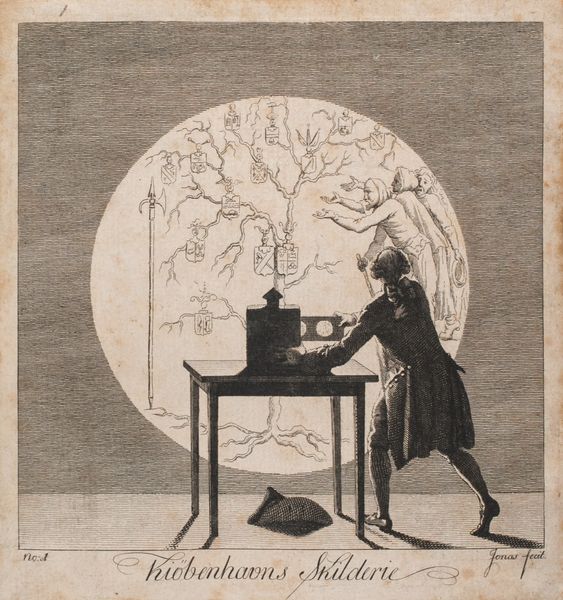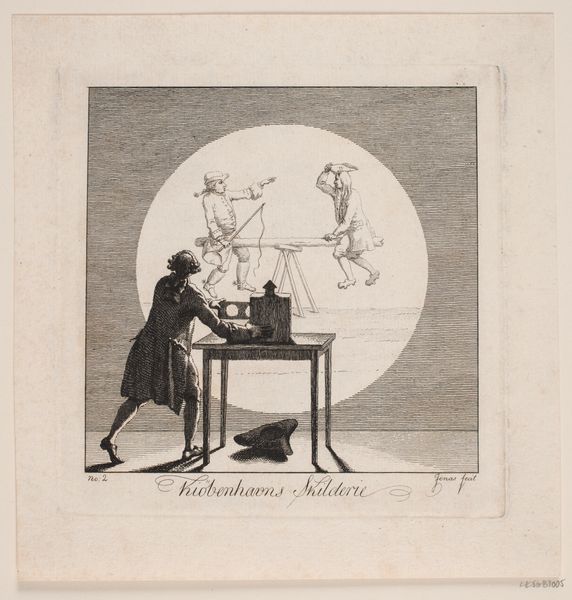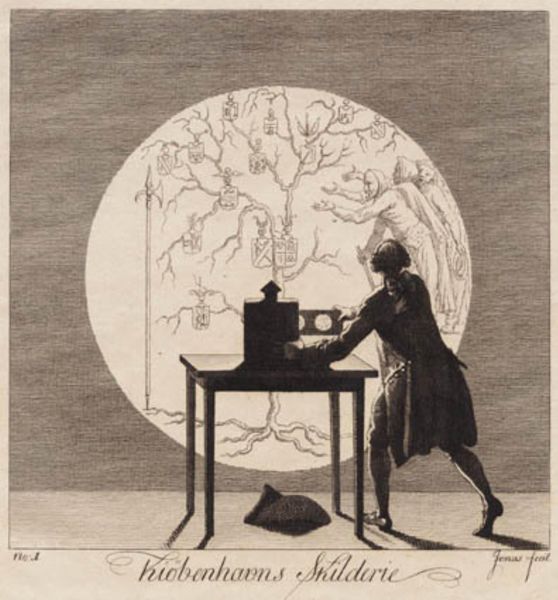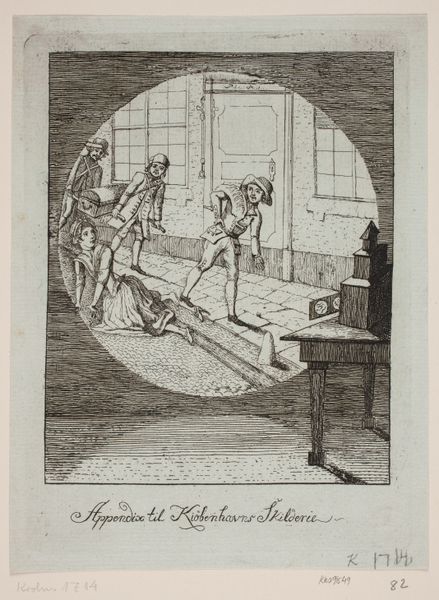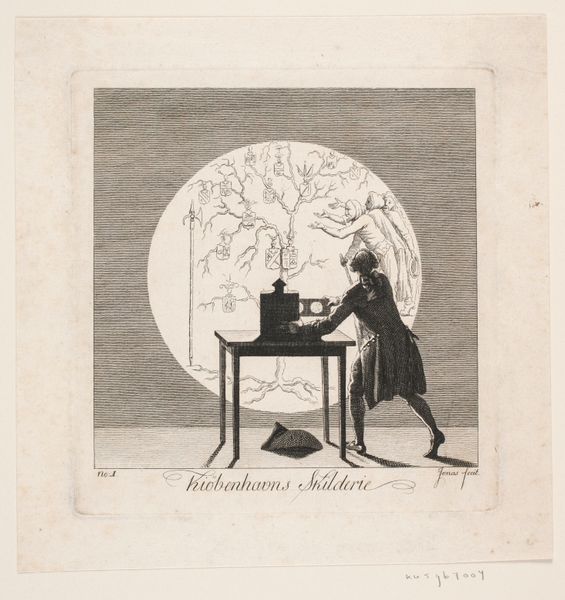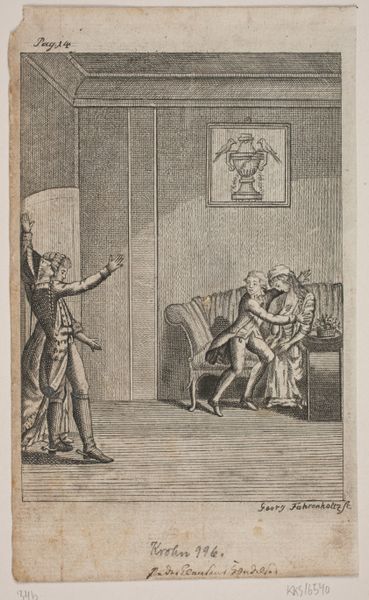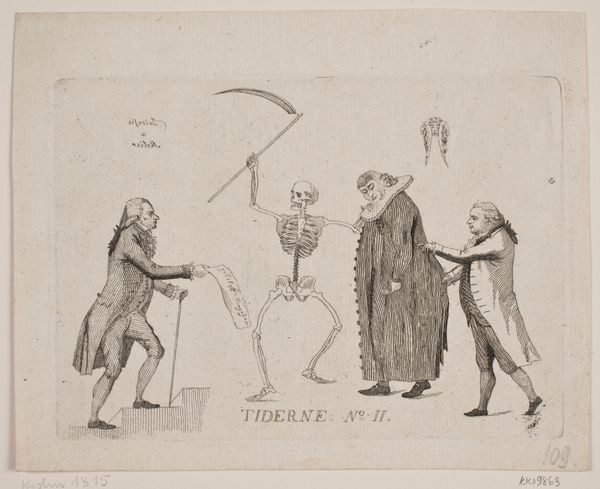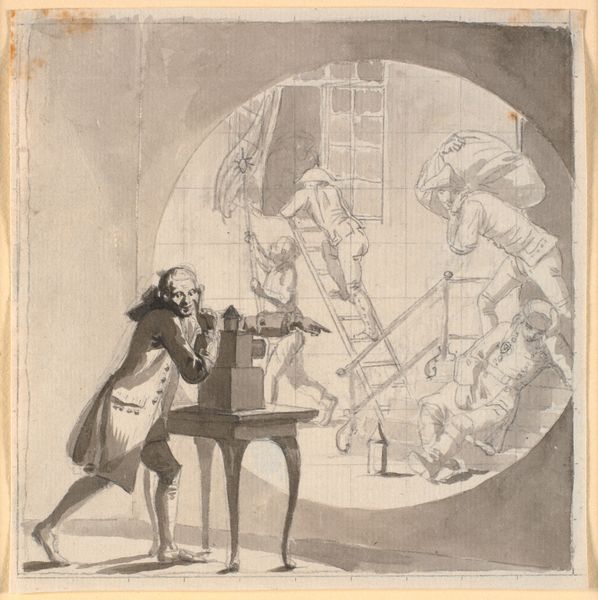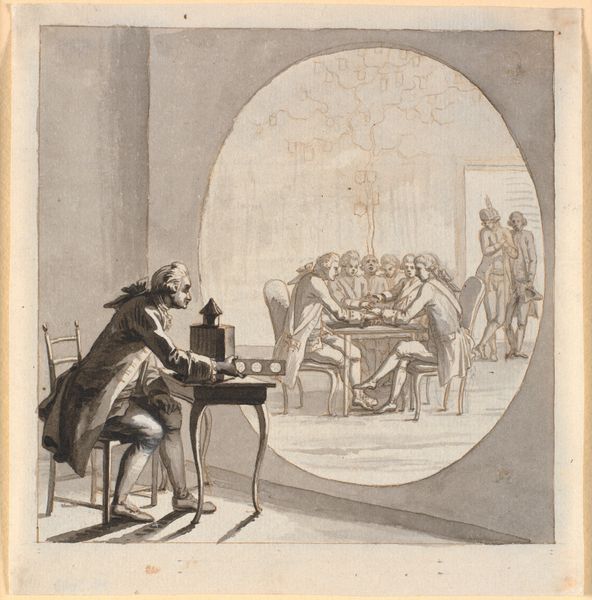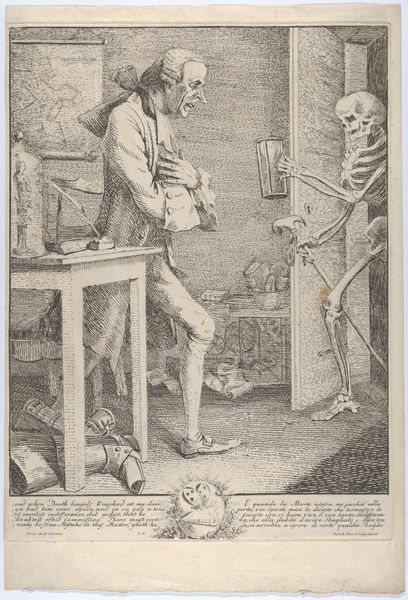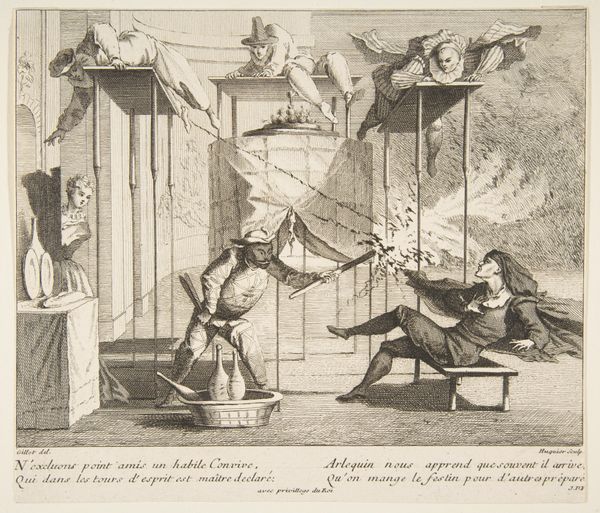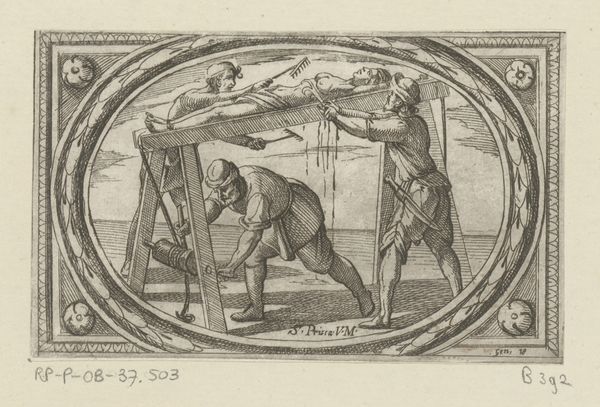
drawing, print, etching
#
drawing
#
neoclacissism
#
narrative-art
# print
#
etching
#
landscape
#
genre-painting
Dimensions: 154 mm (height) x 145 mm (width) (bladmaal)
Curator: This is "Kiøbenhavns Skilderie". Nr. 2, an etching made in 1787 by J.F. Clemens, now housed here at the SMK. Editor: It's wonderfully odd, isn't it? Like a scientific diagram crossed with a satire. The clear lines of the etching and the way the light focuses the image are interesting. Curator: Absolutely. It's tempting to consider the etching in light of social and cultural contexts, specifically through the lens of eighteenth-century entertainment. Public perception often reduces those in that era to aristocrats. Is this work pushing back on those perceptions? Is there something radical at play here? Editor: What interests me most is how Clemens is actually *making* meaning, not just what he represents. Think about the production process—etching, printing. It’s a technology designed to make multiples, distributing this little drama to a wider audience than a unique painting could reach. Curator: And a very particular audience, right? This print addresses the material realities, such as social and gender issues in relation to labor as a performative exercise? Editor: Exactly. Also, note how this connects to the performance depicted. One figure works this machine—essentially the projectionist or engineer—while the other figures perform, trapped and silhouetted inside that circle. This has something critical to say about the economics of seeing in Denmark during the late eighteenth-century, too, wouldn’t you agree? Curator: I do. When assessing, remember, gender and power also take center stage. Considering their roles in both production and viewership within eighteenth-century Copenhagen opens further interpretations of who wields agency and how visual narratives bolster societal norms, gender roles, and perhaps, gender-based expectations within Copenhagen at the time. Editor: Thinking about the labor that goes into the circulation, what are people going to do with these things? Are they pinning them on walls? Trading them? Studying the latest in technological novelties, in shadow play techniques? Curator: The performative gesture—these types of drawings may serve as commentary of daily activities; Clemens' decision to position people in the drawing may lead us to reflect on power dynamics. In light of class hierarchies of the era, do we see echoes of colonial control enacted in everyday exchanges, the play between seeing and seen? Editor: And the starkness of the etched line really emphasizes the performative nature of labor in an era undergoing massive changes from cottage industries to increasingly consolidated manufactures. Food for thought. Curator: It truly is. A testament to how artworks resonate across time, allowing continued questioning. Editor: A print that continues to yield new meanings depending on where we place our focus.
Comments
No comments
Be the first to comment and join the conversation on the ultimate creative platform.
